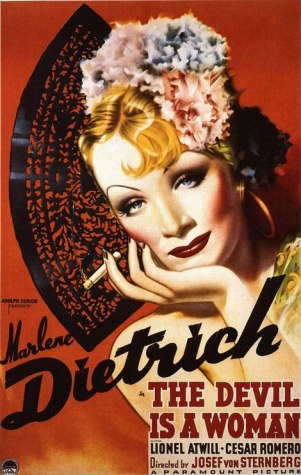 “[Dietrich] and I have progressed as far as possible together, and my being with her will help neither her nor me.” —Joseph von Sternberg after making The Devil Is a Woman
“[Dietrich] and I have progressed as far as possible together, and my being with her will help neither her nor me.” —Joseph von Sternberg after making The Devil Is a Woman
In the annals of creator-muse relationships, Josef von Sternberg and Marlene Dietrich stand out as one of the oddest couples.
He was a tyrannical aesthete. A diminutive, immaculately dressed monster who refused his actors bathroom breaks and grew a mustache to look intentionally “more horrible,” in his own words. She was a bighearted goddess. Her screen glamour belied the earthiness and generosity that led Billy Wilder to call her “Mother Teresa with better legs.”
The volatile Sternberg-Dietrich pairing produced seven of the most ecstatically, enduringly beautiful movies of all time. Beginning with The Blue Angel, these Baroque, decadent films usually revolved around an unpredictable femme fatale with a knack for enthralling and degrading the men in her life.
 Although it’s often the woman who holds the whip in Sternberg works, ironically, the dictatorial auteur liked to refer publicly to Dietrich (and to all actors) as insipid puppets. Tempting as it is to describe their cinematic love affair as a Svengali-Trilby-style domination, the truth remains more complex.
Although it’s often the woman who holds the whip in Sternberg works, ironically, the dictatorial auteur liked to refer publicly to Dietrich (and to all actors) as insipid puppets. Tempting as it is to describe their cinematic love affair as a Svengali-Trilby-style domination, the truth remains more complex.
In 1968, Sternberg wrote, “I am a teacher who took a beautiful woman, instructed her, presented her carefully, edited her charms, disguised her imperfections and led her to crystallize a pictorial aphrodisiac. She was a perfect medium, who with intelligence absorbed my direction, and despite her own misgivings responded to my conception of a female archetype.”
However, she was more than a passive creation. When they met, she was no ingénue; she could already draw on years of stage and film experience. After all, Sternberg respected Dietrich enough to concoct her own iconic cabaret costumes for The Blue Angel, effectively assigning her responsibility for a key aspect of the film’s look. He said, “She has an uncanny knack for what looks right,” and by the end of their collaborations, Maria Riva noted, Sternberg admitted that Dietrich knew as much about cameras and shot set-ups as a director.

Thus, one must conclude that Dietrich and Sternberg co-authored her persona. Plus, Sternberg certainly can’t take credit for all of her allure! Without her mocking sensuality and her inner strength masquerading as matter-of-factness, their seven films together would’ve been icy exercises in gorgeous cinematography.
And today, I’d like to examine the last and probably the least well-known of their collaborations, The Devil Is a Woman. On the cusp of separating with Dietrich forever, Sternberg created a visual love song, half malice, half worship, originally given the musical name Caprice Espagnole, before Ernst Lubitsch changed it to the more self-explanatory final title.

Set in 19th century Spain, the story begins with a hallucinatory sequence of the impressionable Don Antonio chasing an elusive, masked woman in the midst of Carnival. When Antonio goes to visit a bitter, lonely friend, Don Pasqual, at their officers’ club, he learns that the woman he saw, Concha Perez, drove Pasqual to ruin his reputation and retire in despair.

Told in flashback, the sadomasochistic romance between the wheedling Concha and the stoic, embarrassed Pasqual emerges through a downward path of episodic encounters. Pasqual finds Concha, loses his heart and his money, and then she deserts him. This pattern repeats itself several times. When we jump back to the present, Pasqual and Antonio enter into yet another iteration of the jealous cycle—ending in a duel that will force Concha to show where her affections truly lie.
Oh, did I mention the fact that Don Pasquale or “Pasqualito” is a dead-ringer for Sternberg? Seriously. It gets creepy after a while.

When film critic Alexander Walker asked Sternberg why he made Atwill look so much like him, the director replied, “Everyone in my films is like me… spiritually.” Well, that’s nice, Jo, but don’t avoid the question, please. Quite frankly, I think Sternberg knew that The Devil Is a Woman would be his last film with Dietrich, and he wanted to immortalize his doppelgänger in her arms.

That’s not to say that I—or anyone else—should view Sternberg as a jilted man. According to Maria Riva, Sternberg called off his collaboration with Dietrich. He may have done so because he wanted her to make a commercial success with another director, whereas his efforts were decreasingly profitable. She objected—protesting that she resembled “a potato” when photographed by anyone else—but it was the end of a legendary partnership.
Although their final movie together lacks the unity of Shanghai Express, which I consider the greatest of the Dietrich-Sternberg films, this tale of sexual obsession resonates with a poignant sense of personal desperation and pain. Some reviewers have observed that Sternberg uses his lavish mise-en-scene as a distancing technique; for me, it’s always the opposite. I feel that I’m meeting an exquisitely tragic (or tragically exquisite) person; I want to understand the anguish underneath the sublime bric-a-brac.
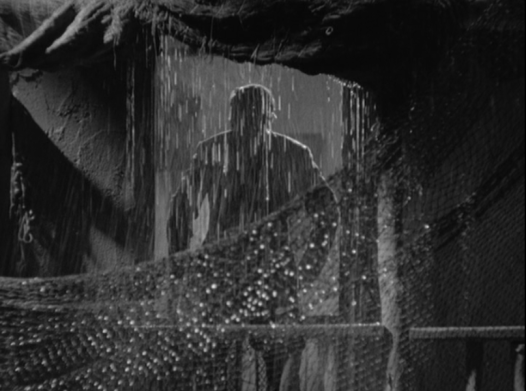
Every gauze curtain, every hanging flacon, every glittering hair comb in The Devil Is a Woman possesses the idealized desirability of a mirage. But to call this movie a feast for the eyes would soften the element of defiance inherent in such a positive glut of beauty; its overstimulation borders on cruelty—rather like putting such a feast before starving eyes.

Swathed in some of the most ornate costumes designed by Paramount’s Travis Banton, Dietrich never looked better. In fact, Maria Riva remembered that it was Dietrich who insisted on the preponderance of lace that becomes a major motif for her coquette-on-steroids. I’m not the first person to remark that the swirl of veils, nets, and curtains provide a visual equivalent for the layers upon layers of Concha’s identity. Is she a capricious girl pretending to be a femme fatale? Or a femme fatale pretending to be a femme fatale?
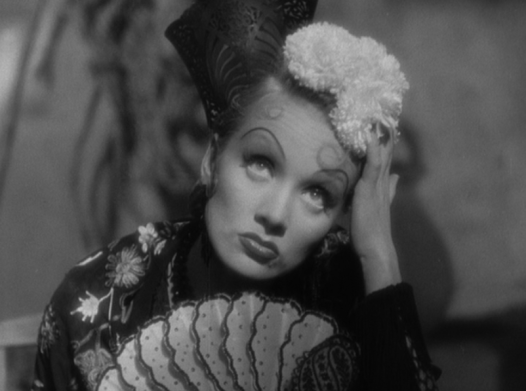
Dietrich’s assurance and maturity as an actress surge forth from the screen. Capable of exaggerated, girlish shenanigans and dignified (if a little coy) reflection, her Concha harbors unexpected reserves of brains and guts. One cannot help but be amused by her tendency to interrupt others, her masterfully illogical arguments, and her ability to displace blame onto her lovers.
Despite the humor Dietrich infused into the film, a suppressed violence simmers in each frame. I wouldn’t be surprised if Sternberg deliberately channeled the style of Francisco de Goya, an artist who could slip from revolting horrors to refined beauty. The contorted carnival masks that fill the streets all leer at the protagonists like a swarm of demons. Concha’s one-eyed, old hag manager incessantly cackles at Don Pasqual, as though she can perceive his imminent humiliation.

Most alarmingly, the viewer has to question how much Concha diverges from the version of her that Pasqual portrays. After all, some of his flashbacks visit places and times when he wasn’t even present. In one instance, we “see” the illiterate Concha dictate a letter to a curate, fabricating a dejection and heartache that she doesn’t feel. To get really brambly, he’s representing her as she falsely represents herself.
By contrast, perhaps the most important moment in Concha and Pasqual’s relationship takes place off-screen. Surprising Concha with another lover, Pasqual confronts her. Refusing to back down, she questions his right to tell her what to do—he’s not her father, her husband, or her lover. It’s the straw that broke the camel’s back. He hauls off and hits her.


Cut to the shutters outside Concha’s apartment. Over the sound of raindrops, we hear short, sharp cries of pain and slaps. It’s a terrible moment of betrayal for the viewer, shut out of Don Pasqual’s point-of-view at a crucial moment in the plot. Not seeing the violence inflicted upon Concha actually makes it much, much worse. What we imagine will always be more brutal.

The next day Concha shows no marks of abuse, but the scene leaves a bitter taste in our mouths. We, the spectators, have no cozy, righteous character to identify with. Our loyalties hover between Concha, an intentionally provocative manipulator, and Pasqual, who just beat up his lover, which is irrefutably wrong, no matter how appalling she seems. Although we tend to remember Sternberg-Dietrich movies for their pictorial beauty, The Devil Is a Woman plays with our ethical judgments, giving us a messy, uncomfortable coupling with no moral center.

I’m also fascinated by how Sternberg edited the flashbacks. Within sequences, he made frequent use of lingering, romantic dissolves—but when travelling from the past to the present, he uses straight cuts. The jarring, split-second change of time and place feels like a slap on the face. It jolts and shocks us, while suggesting the rawness of past experience. As Faulkner would say, the past isn’t even past. Certainly not when you’re staging it for celluloid eternity.
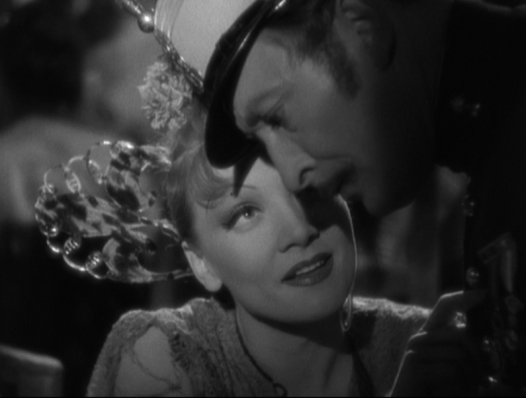
We tend to treasure movies that capture the beginning of an off-screen romance (To Have and Have Not comes to mind.) Well, there’s a special place in my heart for films that memorialize the dissolution of a real life relationship. Dietrich and Sternberg’s dying affair imbues the film with a peculiar mixture of rage and melancholy that keeps me riveted to the screen.
Released under the iron rule of Joseph Breen once the pre-Code honeymoon was over, the film met heavy censorship. (A perverse musical number, “If It Isn’t Pain, It Isn’t Love” was recorded, but cut. Click here to listen to it.) Even once it was released, critics panned it, audiences shunned it, and Paramount withdrew it from circulation after the Spanish government threatened to boycott their films. The studio destroyed their print. The Devil Is a Woman—a hymn of rejection—was appropriately rejected.
Yet, The Devil Is a Woman survives. How is that possible? Dietrich saved this masterpiece. She kept a personal copy. It was her favorite among her movies.

This post is part of the Dynamic Duos in Classic Film Blogathon, hosted by Once Upon a Screen and the Classic Movie Blog Hub. Be sure to check out this outstanding blog event and read the other entries!

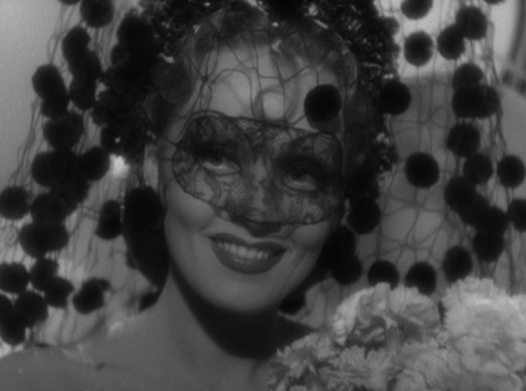



this is such a great film.
I was shocked to learn that Josef von Sternberg called Marlene Dietrich, and all other actors, puppets. Yikes!
I also laughed at Billy Wilder’s description: Mother Teresa with better legs. Hilarious!
Uh, I didn’t know Sternberg was so arrogant! He may have helped Dietrich to build her persona, but if she didn’t have that “It” that made her special, Sterneberg couldn’t have done it. She is the force behind The Shanghai Express, and even in non-Sternberg films, she shines.
Don’t forget to read my contribution to the blogathon! 🙂
Kisses!